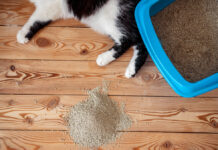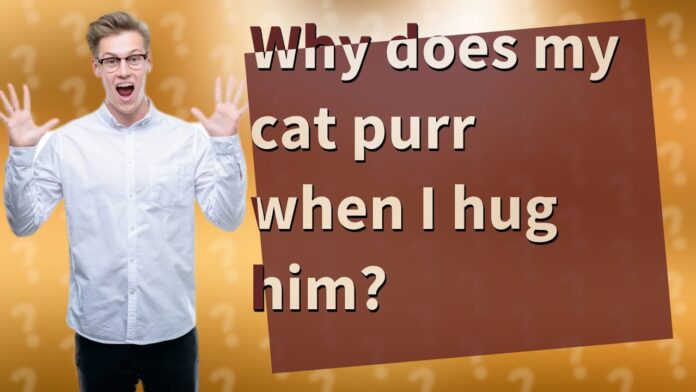Ever wondered why your cat starts their adorable motor-like sound when you scoop them up? If you’ve asked yourself “why does my cat purr when I hold him,” you’re not alone in this curiosity about one of the most endearing cat behaviors.
The Science Behind Your Cat’s Purring
When your furry friend starts purring in your arms, it’s actually a fascinating biological process. Cats create this soothing sound through rapid twitching of their laryngeal muscles and diaphragm, typically at a frequency between 25 and 150 Hertz. Pretty amazing, right?
For more interesting insights about various dog behaviors and pet care tips check out our comprehensive dog guide.
Main Reasons Your Cat Purrs During Cuddles
1. Expression of Contentment and Trust
When your cat purrs while being held, it’s usually their way of saying, “Hey human, I’m super comfortable with you!” According to Pet like boss, this is one of the strongest signs of the bond between you and your feline friend.
2. Self-Healing Mechanism
Believe it or not purring isn’t just about happiness. Cats also purr when they’re – Healing from injuries- Dealing with stress- Managing pain- Self-soothing
3. Social Bonding
Cats use purring as a communication tool to:- Strengthen relationships with their humans- Show affection- Request attention or food- Express contentment
When Should You Be Concerned?
While purring is typically positive sometimes it might indicate – Anxiety or stress- Physical discomfort- Medical issues- Need for attention
Tips to Strengthen Your Bond Through Physical Contact
-
Respect Their Space
- Let them initiate contact
- Watch for signs of discomfort
- Don’t force cuddles
-
Create a Routine
- Regular cuddle sessions
- Consistent feeding times
- Dedicated play periods
-
Perfect Your Holding Technique
- Support their whole body
- Keep them close to your chest
- Allow easy escape routes
Fun Facts About Cat Purring
- Purring starts at birth when kittens communicate with their mothers
- Not all cats can purr (like tigers and lions)
- Purring can help heal bones and muscles
- The frequency of purring can promote tissue regeneration
Common Misconceptions
-
Purring Always Means HappinessNope! Cats might purr when they’re in pain or stressed too.
-
All Cats Purr the Same WayEach cat has their unique purring style and volume.
-
Only Domestic Cats PurrSome wild cats, like bobcats and cheetahs, can purr too!
How to Respond When Your Cat Purrs While Being Held
-
Gentle Petting
- Stroke in the direction of fur
- Focus on their favorite spots
- Pay attention to their body language
-
Verbal Communication
- Speak softly
- Use consistent phrases
- Maintain a calm demeanor
-
Physical Response
- Hold them securely but gently
- Maintain steady breathing
- Stay relaxed
Building a Stronger Bond
To enhance your relationship with your purring pal:1. Establish regular cuddle times2. Create a safe environment3. Use positive reinforcement4. Respect their boundaries5. Provide consistent care
When to Consult a Vet
While purring is usually normal, watch for:- Sudden changes in purring patterns- Excessive purring with signs of pain- Unusual body language- Changes in eating or sleeping habits
Final Thoughts
Understanding why does my cat purr when I hold him helps strengthen your bond with your feline friend. Remember, each cat is unique, and their purring patterns might vary. The key is to pay attention to their overall behavior and body language while enjoying those precious moments of connection.
Whether your cat purrs softly or sounds like a mini tractor, these vibrations are a special part of your relationship. Keep showing them love, respect their space, and cherish those purr-fect moments together!
Remember to always monitor your cat’s overall health and behavior, and don’t hesitate to consult with a veterinarian if you notice any concerning changes in their purring patterns or general well-being.









